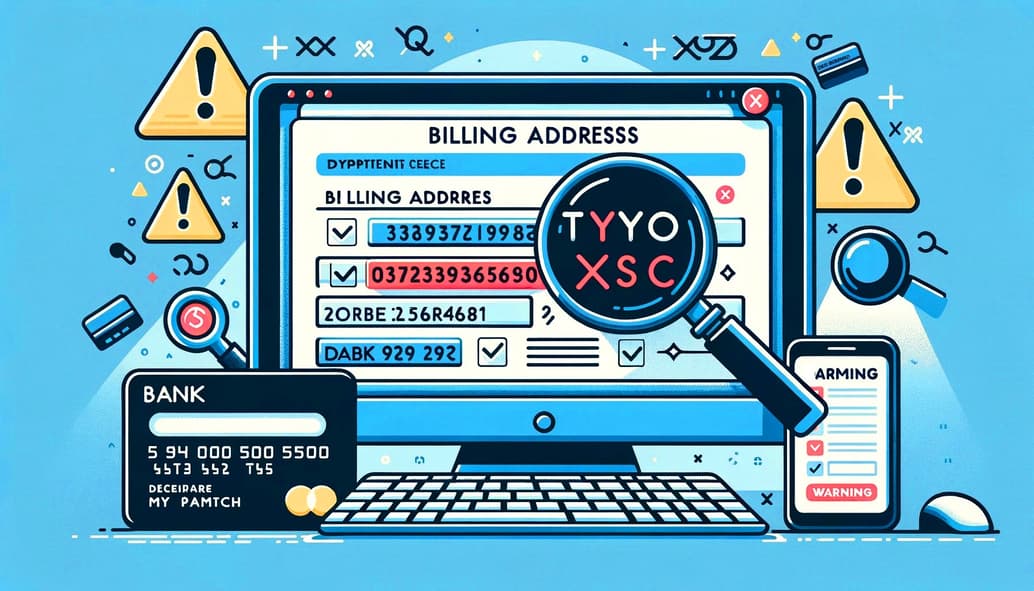Billing Address: Meaning and Why It Matters

When you make online purchases or set a payment method, you’re often asked to fill in your billing address. Many people treat this step as a mere formality, yet it’s a crucial part of every payment made with your card. This small detail links your bank card to your identity and can directly affect whether a transaction is approved or declined.
In this guide, we’ll explain the billing address meaning and explain why it’s so essential to keep this information accurate and up to date.
What Does a Billing Address Mean?
As the name suggests, a billing address is a place where a bank sends your account-related documents, such as billing statements, notices, or receipts. You usually provide this information to your financial institution when your card is issued.
For many people, the billing address matches their home address. However, if you are a frequent traveler, use a business card, or have recently moved, your billing address might differ from your current physical or shipping address.
The Role of a Billing Address

Does a billing address matter that much? To answer this question, it’s enough to look at what this address is used for:
- Payment verification: Businesses use Address Verification Service (AVS) to confirm that the person using the card is the legitimate account holder authorized to make payments.
- Sending billing info: Your bank and service providers use your billing address to mail important updates, billing statements, and legal correspondence.
- Managing subscriptions and recurring payments: Online platforms often rely on billing addresses to verify and renew memberships, streaming services, or other subscriptions.
Why Is Billing Address Important?

The major reason why your billing address is so important is security considerations. It acts as a communication link between you, your financial institution, and a merchant, helping to verify your identity and protect your account.
Keeping your billing address correct and up-to-date helps you:
- Prevent payment failures: When making a purchase, especially online or over the phone, the system checks whether the billing address you enter matches the one registered with your bank. Even small inaccuracies or discrepancies can cause delays or declined transactions.
- Protect against fraud: Billing info checks help detect and block suspicious purchases and unauthorized transactions, keeping your financial data secure and reducing the risk of someone using your card without permission.
- Maintain accurate account information: The correct billing address ensures your bank can reach you easily about your account or payment issues.
- Make online purchases smoothly: Many e-commerce platforms use billing addresses as part of their fraud-prevention systems to guarantee secure payment processing.
Billing Address Mistakes: What Not to Do
Whether it is a mismatch between the entered and registered address, incorrect details, outdated data, or just a typo, billing address errors often occur when placing orders and making payments. However, even the slightest mistake could result in your payment card being rejected and the transaction not being completed successfully. The cardholder billing address you enter should always be accurate, so let’s take a look at some of the most common issues you should avoid:

Using an Old or Outdated Address
First, remember that your billing address must always remain up to date. When you change your residence, contact your bank and update the specified payment details so that they remain current. As mentioned earlier, when making a purchase, online stores may request address verification to ensure that the card truly belongs to the payer.
Shipping vs. Billing Address
Another important point that often misleads cardholders and leads to failures when purchasing online is that the billing and shipping addresses are not the same thing. Of course, they can coincide, but they can also be different. It is important to fill out everything carefully, avoid confusing the data, and be prepared for the fact that if there are discrepancies between the payment and shipping addresses, additional verification may be required to confirm your transaction.
Typos and Spelling Mistakes
Another common mistake is simple typographical errors when entering data. Please ensure that the billing address and name you provide match exactly what is on your bank card and bank account information. Also, make sure that the second line of your street address (such as apartment number) is placed correctly in the second line of the field.
You can check your billing address directly with the bank that issued your card. If you need to update your associated billing information, you can usually do so easily through the bank’s website, the mobile application, by mail, by contacting customer support, or by visiting your bank in person.
Final Thoughts
When you wonder, “What is a billing address?”, it seems like a simple piece of information at first glance. In practice, though, it’s a crucial part of your account’s security profile, ensuring payment protection and making fraud and identity theft almost impossible.
So, remember to keep all your contact information current, enter data carefully, and provide only truthful information to avoid being accused of fraud and having your account blocked.




![What is the APR on a Credit Card? [How Does it Work?]](https://rates.fm/static/content/thumbs/385x210/d/bc/wun2sw---c11x6x50px50p--086c69113753a543a7475ce8b11c3bcd.jpg)